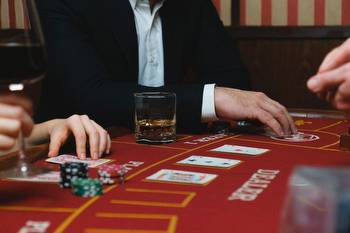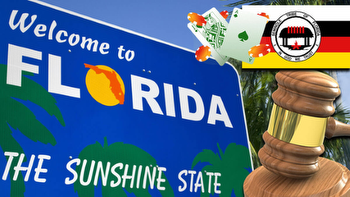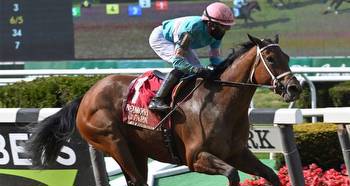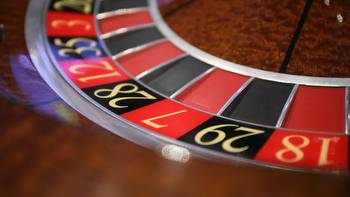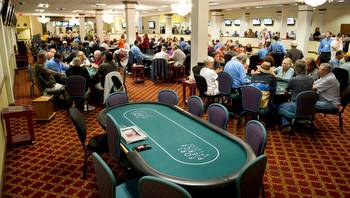Ah, ha, ha, ha, staying alive in a new gambling world

In 1865, Frenchman Pierre Oller invented pari-mutuel wagering. His concept was a system of placing bets where winning players divide the total amount of each bet in proportion to their wagers minus management expenses. In 1908, pari-mutuel betting became the standard for horse race wagering when used at the Kentucky Derby. It became the most popular betting method on horse races, the foundation of horse racing.
Our foundation is cracking. The engine that keeps our game afloat is losing steam. We are reluctant to admit that our business model, which worked perfectly well in the last century, will not work much longer, at least not for mortals.
I present myself as exhibit A.
My first harness wager occurred near the merciful end of the disco era. After an evening channeling John Travolta, I danced beneath the mirrored spinning ball in the Stardust Lounge of the Holiday Inn in Naperville, IL. The next afternoon, I visited a nearby harness racetrack where I plopped $20 on a racehorse. I believe the name of the racehorse was Fading Fast.
Astonishingly, Fading Fast won the race, and I won some money. The payoff sealed my fate.
At that time, I knew (vaguely) that my competition in that horse race came from the people on the racetrack premises, folks who used paper programs to wager paper money on other horses in that race. I also knew that the racetrack took a cut, a takeout, for putting on the show. A horse wager was like a hand in a poker game where we played against each other, and the host took a piece of the action. Horseracing gamblers enjoyed this arrangement.
Today, my horse gamble is different. I am no longer sure what happens to the $20 I wager on a trotter or what happens to the money returned on a winning wager. I’m not sure who my competition is, but I have suspicions that my foe is no longer a guy in a cheap suit smoking a cigar or a factory worker out for a night at the track. A barrage of questions without answers makes me feel like a sap. Even ex-disco dancers do not want to feel foolish.
Are we gambling against a person or a computer program?
Are we betting against a syndicate?
Are we gambling against a computer-robotic wagering platform?
Do high-volume wagers and wagerers get a rebate, a better deal on the takeout than average Joe’s and Jane’s?
What is the best Advanced Wagering Platform?
Will fixed-odds wagering level the field?
Can robots or bots sneak in wagers at the last megasecond to skew the odds?
How many gamblers on horse races use metadata from machines that crunch numbers?
Are there shady offshore gambling sites that steal the horse racing product?
Can any human brain using a paper racing program consistently turn a profit gambling on horse racing?
Why would we play a game with a 20% takeout when other sports gambles are much lower?
What will the next decade bring to our beloved sport?
Do you know the answers to these questions? I don’t. Noodling around the Internet, I stumbled across a think tank on the business of gambling in racing. Here is a snippet of often indecipherable information:
“Most of the play from the HVBS (high-volume betting shops) or SPMOs (secondary pari-mutuel organizations) do not count in the ADW figures. Customers like those place their bets directly into the pools, bypassing an ADW intermediary. There are also smaller CRW’s (computerized robotic wagering groups) which DO process bets through ADWs, entities betting tens of millions annually. Their total handle is unknown to the wider industry because it is commingled with ADW betting. Bettors may not understand how the big HVBS/SPMO groups operate and precisely what they are betting, but they can readily observe their impact on the game.”
This jibberish leads one to believe that some serious-minded players are in the food chain between money wagered and returned on a horse race. Money often leads to rough neighborhoods. And the sports gambling neighborhoods are about to get much larger and more cutthroat.
Many of you will not be troubled by issues of this ilk because you have had your harness racing fun and may not be around. Others will carefully cover your heads and wait for the tooth fairy to solve all problems. For those who care and have influence, the fork in the road for harness racing would seem to be one of the following:
- Fix the broken engine of our sport, pari-mutuel wagering, and make a horse wager palatable for all players.
- Concoct new wagering methods on racing harness horses that do not require our traditional engine. This retooling will certainly involve fixed-odds wagers and gambling plays that are more luck than skill for new players. Most new players will be searching more for entertainment and less for intellectual stimulation.
Option A does not look promising. Technology will continue to squeeze money out of every dollar, competition for gambling dollars will expand, and the presentation of our product will remain static to most eyes. Horse racing will be a poor wager for both loyal and casual fans. We will be a hard sell for new participants.
Option B may not thrill you but is the most promising.
A shift to fixed-odds wagering for veteran handicappers and entertaining random plays for new gamblers on horse races may offer our best hope for – Ah, ha, ha ha staying alive.









